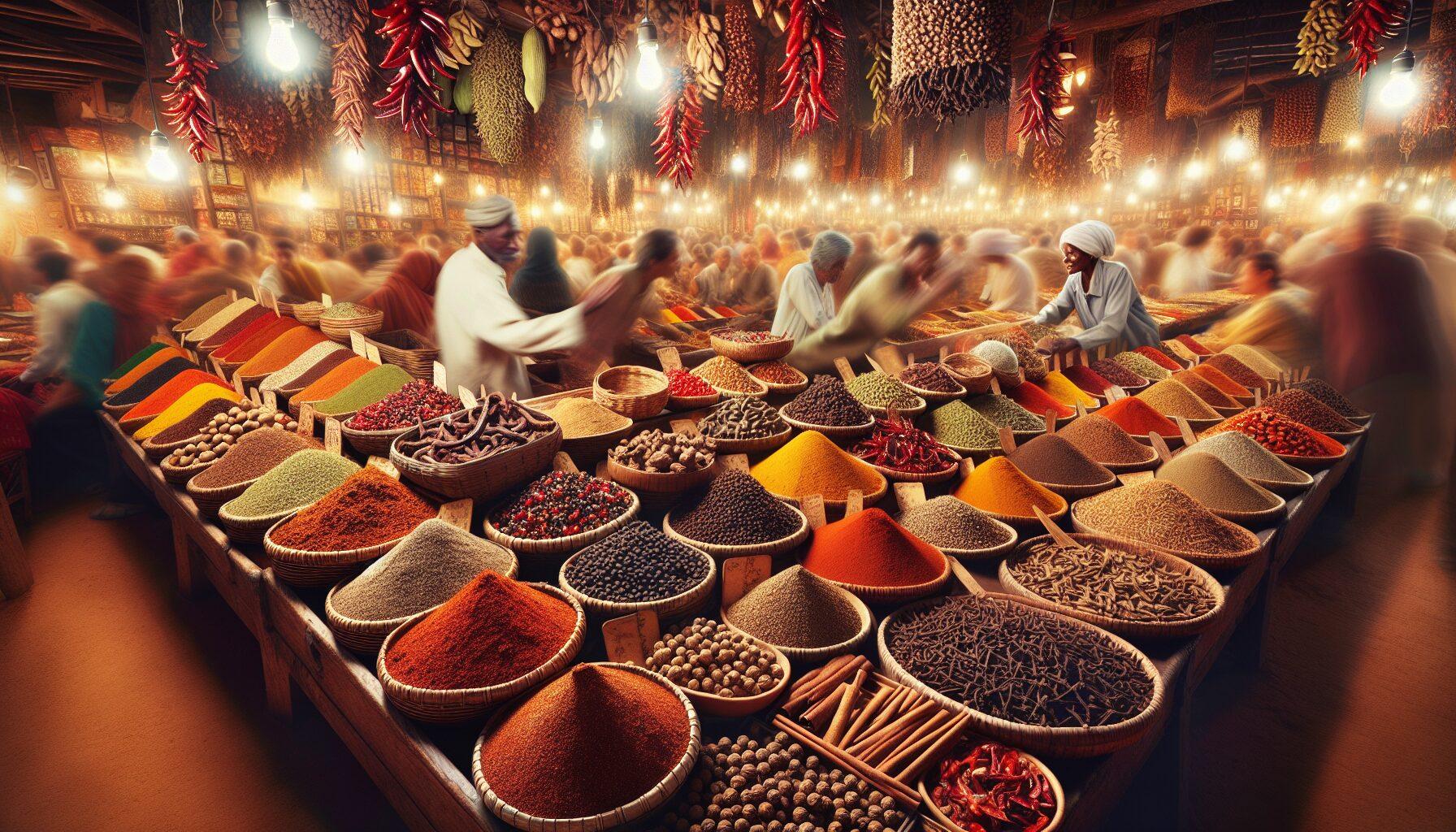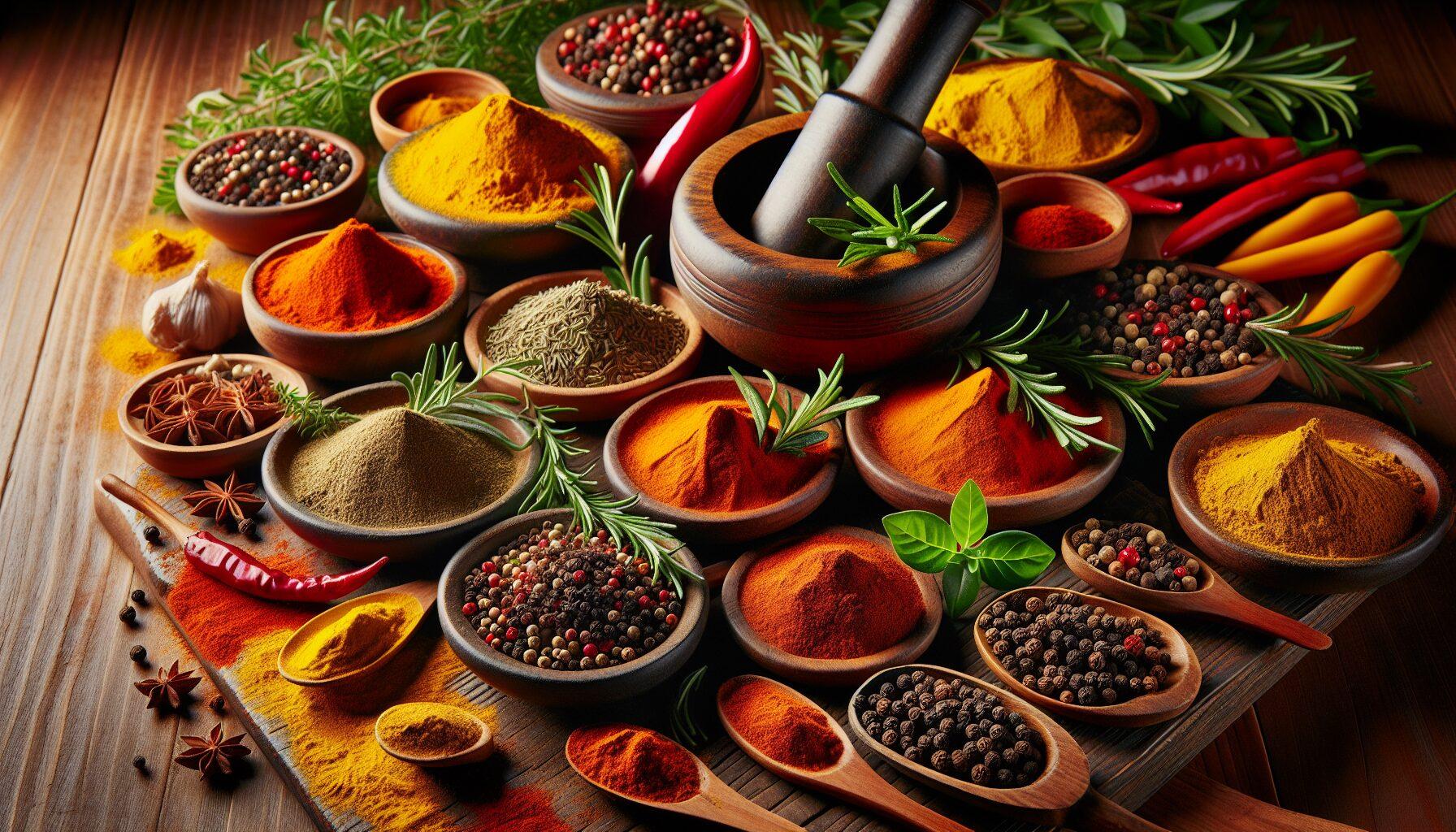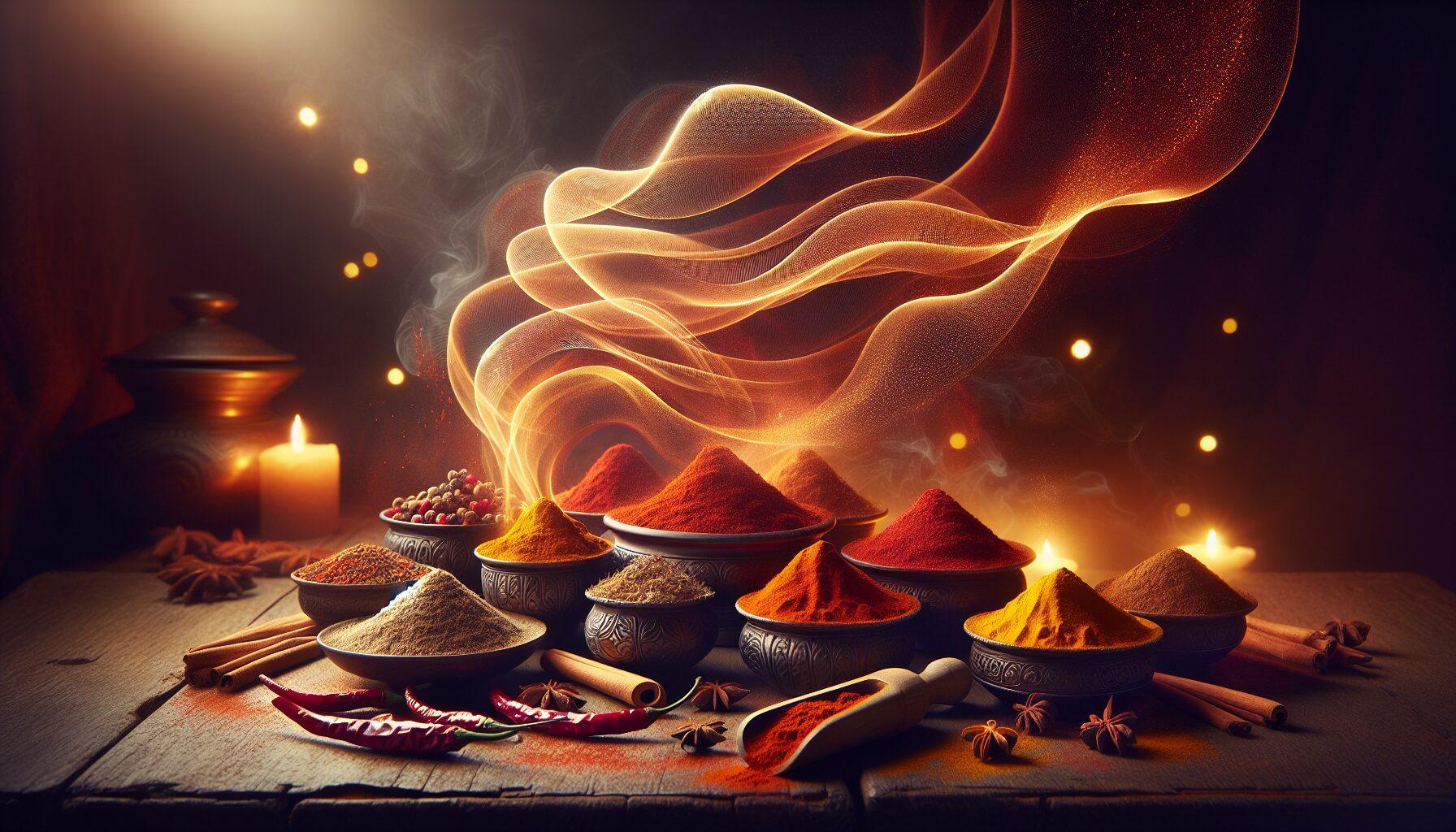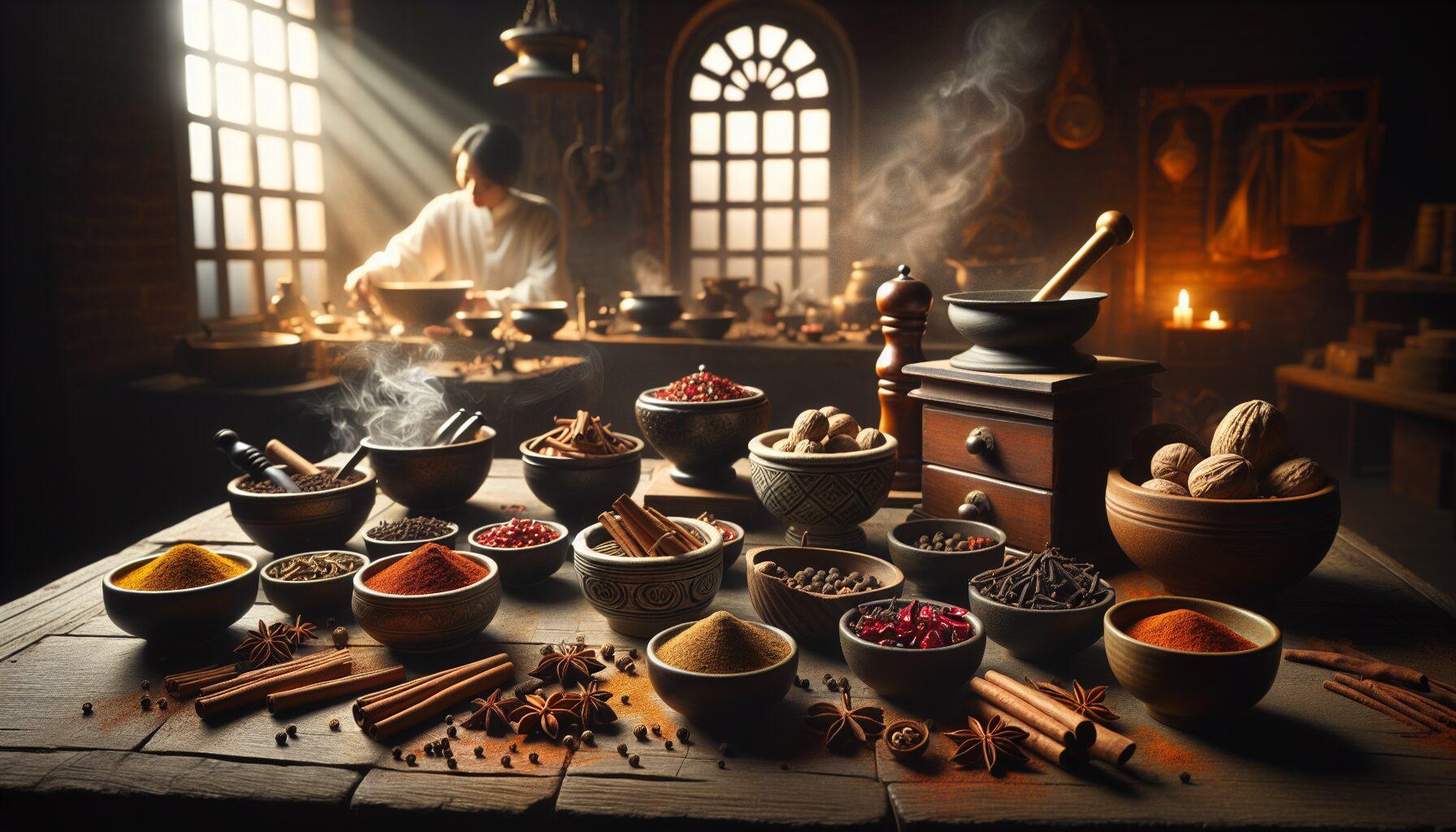Sensual Spices
In the world of comfort cuisine, the infusion of Sensual Spices is like an artist uncovering the perfect hue to complete a masterpiece. It’s about elevating the familiar and nostalgic into something remarkable, igniting the palate with a harmonious blend of flavors that captivate and delight.
By infusing basic dishes with Sensual Spices like cardamom’s candy heat, the smoky allure of chipotle, or the refined, earthy notes of saffron, we start a culinary revolution that honors tradition while boldly charting new territories of style.

Did you know that a dash of cardamom in your apple pie can deliver the same serotonin boost as a warm hug? Comfort foods, often considered the culinary version of a security blanket, have always been associated with simplicity—think creamy mac and cheese, fluffy mashed potatoes, or hearty chicken soup.
What if these timeless classics could evolve beyond nostalgia into a rich, multisensory experience? Introducing sensual spices—ingredients like smoked paprika, saffron, and star anise that infuse dishes with remarkable depth, warmth, and complexity.
This article delves into reinventing comfort foods with bold, aromatic spices, blending science, tradition, and creativity to elevate the ordinary into something extraordinary.
The Science of Sensual Spices: How Flavors Affect the Brain
Why Do Certain Spices Evoke Comfort?
Spices do more than enhance the flavor of our meals—they engage our senses and trigger emotional and physical reactions. The compounds in spices stimulate different areas of the brain, including those linked to sensation, taste, and memory. This creates a rich, multisensory experience that can transport us to specific moments or places, evoking a sense of comfort and familiarity.
For instance, the warm, comforting scent of cinnamon might bring to mind cozy winter nights, while the vibrant zest of lemongrass could transport us to a tropical summer escape. By tapping into the neural pathways these spices influence, chefs and home cooks alike can create dishes that not only satisfy hunger but also ignite the senses and stir emotions.
Cinnamon and nutmeg activate the mind’s limbic system, which governs emotion and reminiscence. A 2021 research in Food & Function linked capsaicin (present in chili peppers) to endorphin launch, making a pure “high” (PubMed). Chef Yotam Ottolenghi notes, “Spices are the bridge between sustenance and seduction—they make food memorable.”

Practical Tip: Unlock the potential of spices in your cooking by starting with a selection of fresh, high-quality options. Experiment with the fiery kick of cayenne or the subtle warmth of cinnamon to discover how they transform your dishes.
Ottolenghi suggests harnessing the power of spices to enhance flavors and create unforgettable culinary moments. For a warm and inviting twist, try sprinkling a hint of cinnamon into your hot chocolate to take it to the next level.
Top 7 Sensual Spices to Transform Your Comfort Food
1: Smoked Paprika: Smoked paprika adds a smoky flavor and a warm touch to your dishes. It enhances comfort foods, giving a rich color to cheese sauce or adding depth to a meat rub.
Its versatility makes it a necessary spice for those searching for a touch of seduction to their culinary creations, reworking the extraordinary into the extraordinary with only a sprinkle. Adds a smoky depth to mac and cheese.
2: Cardamom: This warmly fragrant spice isn’t just for sweet treats and holiday cheer; it also brings a comforting essence to savory dishes. A touch of cardamom can elevate the flavors of Middle Eastern stews, infuse warmth into a pot of chili, or create a nuanced complexity in various marinades and glazes.
It’s sweet, woody notes create a cozy and adventurous vibe, seamlessly blending the familiar with the unique. It introduces a floral-citrus twist to classic apple pie.
3: Saffron: Often celebrated as the queen of spices, saffron adds a luxurious depth and vibrant color to any dish it enhances. Its rich, unique flavor profile is versatile enough to elevate sweet and savory creations, from traditional saffron-infused rice dishes to delicate saffron-flavored desserts.

The rich, fragrant depth of a high-quality vanilla bean can transform the ordinary into the extraordinary, making it a prized ingredient for gourmet chefs and home cooks. It adds a luxurious aroma to risotto.
4: Sumac: Sumac stands out with its bright red color and tangy, lemony taste. This Middle Eastern spice is both eye-catching and a versatile ingredient for many dishes.
Whether it’s sprinkling over hummus, adding zest to grilled meats, or brightening up a salad dressing, sumac’s ability to elevate a dish with its tangy punch is unmatched.
Chefs and food enthusiasts often reach for this spice to add depth of flavor and a burst of color, ensuring every bite is visually appealing and delicious. It adds a tangy zest that brightens mashed potatoes beautifully.
5: Cumin: Cumin, known for its earthy and warm flavor, is a staple in kitchens. It enhances a range of cuisines, from the smoky richness it brings to a hearty chili to the essential complexity it contributes to a fragrant curry.
This spice’s versatility is unmatched, as it may be used completely for a burst of taste or floor to seamlessly mix into dishes, making certain every spoonful resonates with its distinctive, comforting notes. Deepen chili con carne’s earthiness.
6: Star Anise: These tiny fragrant gems are a powerhouse of taste, infusing a heat, spicy essence into any dish they grace. Cloves are the unassuming heroes of the spice world, usually utilized with different spices to create a symphony of style that dances on the palate.
Whether studded into ham, simmered in mulled wine, or ground into spice blends, their pungent, sweetly piquant profile is a key note within the culinary symphony of flavors. Simmer in stews for a licorice-like warmth.
7: Turmeric: Turmeric, with its vibrant golden hue, will not be solely a feast for the eyes, a powerhouse of well-being advantages. Revered in conventional drugs and a staple in Indian delicacies, this earthy, barely bitter spice brings an unmistakable heat to dishes.

Its active compound, curcumin, is renowned for its anti-inflammatory properties, making turmeric a popular addition to curries, rice, and even smoothies for a touch of color and a boost of wellness. It provides a golden hue and anti-inflammatory benefits.
Pairing Spices with Classic Comfort Dishes
How do I match spices to my favourite dishes?
| Comfort Food | Sensual Spice Pairing | Effect |
|---|---|---|
| Mac & Cheese | Smoked Paprika + Mustard Powder | Smoky, tangy richness |
| Chicken Soup | Turmeric + Ginger | Anti-inflammatory, fragrant |
| Chocolate Cake | Cayenne + Cinnamon | Subtle warmth and heat |
Case Study: The power of AI personalization is vividly demonstrated in the culinary world, where it customizes flavor profiles to individual preferences, creating a symphony of taste uniquely tailored to each diner.
By examining past preferences, dietary restrictions, and flavor tendencies, AI can recommend innovative spice blends that turn even the most traditional dishes into unique culinary creations.
In the case of consolation meals, such as the beloved mac & cheese, the addition of smoked paprika and mustard powder elevates the dish, infusing it with a smoky tang that enhances the creamy richness in a method that appears both familiar and excitingly new. Brooklyn’s Spice Symphony Café doubled gross sales by including saffron-infused tomato soup.
Step-by-Step Guide to Crafting Your Spice Blends
1: Toast Whole Spices: Toasting whole spices is a key step when making spice blends. It boosts their flavor and releases essential oils, adding a rich aroma that pre-ground spices lack.
Heat a dry skillet over medium heat and add your spices, stirring continuously to guarantee even toasting and forestall burning. The second they turn into aromatic and barely darkened, they’re prepared to be cooled and ground into your signature mix. Enhance oils (e.g., cumin seeds in a dry pan).
2: Grind Fresh: Once your spices have cooled, it is time to grind them right into an advantageous powder. A devoted spice grinder is good, however, a mortar and pestle may even work, albeit with more effort and elbow grease.
The secret is to grind in small, quick bursts, frequently checking the consistency to achieve the desired texture without overheating the spices, which can diminish their flavor. Use a mortar or coffee grinder for optimal taste.
3: Balance Flavors: Unfortunately, there was a mix-up with the content material supplied. The textual content seems to be about grinding spices and balancing flavors, which doesn’t correlate with the title “AI Personalization.”

To handle the subject of AI Personalization, I’ll present a brand new paragraph beneath: Harnessing the power of AI for personalization entails a delicate dance of knowledge and algorithms. Just as a chef should stabilize flavors to obtain culinary perfection, AI techniques should analyze personal knowledge to ship individualized experiences that resonate on stage.
AI uses machine learning to spot patterns and preferences, adjusting instantly to provide content that matches each user’s unique interests.
This not only enhances user engagement but also fosters a sense of connection between the user and the platform, much like a diner feels a bond with a chef who knows exactly how to satisfy their tastes. Follow the “Rule of Four” (sweet, salty, sour, heat).
4. Store in Airtight Jars: Mastering the art of AI personalization requires understanding the complex layers of user data, much like a sommelier identifying the subtle notes in a fine wine. By examining past behaviors, preferences, and even the tiniest interactions, AI can craft experiences that deeply connect on a personal level.
It’s about achieving the perfect balance, ensuring that ideas are neither overly predictable nor completely random, but instead evoke the familiarity of a well-loved melody with an unexpected harmony that captivates the senses. Maintain effectiveness for up to six months.
Recipe: To obtain this symphony of personalization, AI techniques delve into the huge ocean of knowledge, extracting patterns and preferences with the finesse of a maestro. They study from every interaction, paying attention to the nuances that make every person’s style distinctive.
This isn’t just a moment of efficiency but a continuous, dynamic experience where the AI learns and evolves alongside the user. Every recommendation feels like a fresh verse of their unique anthem, always aligned with their core preferences. Golden Comfort Blend (Turmeric, Black Pepper, Coriander, Garlic Powder) adds the perfect touch to roasted vegetables.
Health Benefits: More Than Just Flavor
The Golden Comfort Blend offers a delightful mix of flavors while providing a range of health benefits. Turmeric, the star ingredient, is known for its powerful anti-inflammatory properties and its ability to support a strong immune system.
Black pepper enhances, maximizing its health benefits. Coriander and garlic powder contribute advantages, including improved digestion and a rich source of antioxidants.

This quartet not only creates a flavorful dish but also promotes well-being, turning seasoning into an art that benefits both body and mind. Research in The Journal of Nutrition shows turmeric’s curcumin helps reduce inflammation, while cinnamon supports blood sugar control (Harvard Health).
Tip: To enjoy these benefits in your daily diet, try using a mix of herbs and spices. Adding ginger, for example, not only gives your meals a warm, zesty flavor but also supports digestion, according to the International Journal of Preventive Medicine.
Transform your kitchen into a wellness haven by refreshing your spice cabinet. Create meals that are both tasty and nourishing, suited to your preferences and health goals. Swap out salt for vibrant spice blends to reduce sodium while keeping the flavor.
Cultural Inspirations: Global Spice Traditions
1: India: In the heart of India, the art of spice blending has evolved over thousands of years, creating rich flavors that excite the palate. Turmeric, known for its warm taste and health benefits, shines alongside cumin, coriander, and cardamom in many traditional dishes.
These spices add rich, complex flavors to your meals, provide health benefits, blending ancient culinary traditions with modern nutrition. Take garam masala in butter chicken, for example.
2: Morocco: In Morocco’s vibrant markets, the air is filled with the rich aroma of ras el hanout, a unique spice blend that reflects the country’s history. Each vendor offers their own mix, often including over a dozen spices like cumin, coriander, and turmeric.
This signature Moroccan mix is the spine of tagines and couscous, imparting heat and depth to these iconic dishes, and epitomizing the nation’s wealthy culinary heritage. Ras el Hanout in Tagines.
3: Mexico: Exploring the vibrant heart of Mexico, you’ll be surrounded by the bold flavors of its rich spice traditions. Chili peppers take center stage, with types like ancho, chipotle, and habanero adding a mix of heat and smokiness that defines Mexican cuisine.
These fiery spices are masterfully mixed with fragrant herbs like cilantro and epazote, creating complicated flavors in conventional dishes resembling mole, salsas, and the beloved tacos al pastor.
Mexican spices are about more than just heat; they showcase rich layers of flavor, reflecting the country’s diverse regions and history. Think chipotle in chocolate mole.

The even-handed use of sensual spices like cumin, coriander, and cinnamon brings heat and complexity to dishes, resembling cilantro and epazote, adds a fresh, fragrant quality that balances the palate.
This vibrant culinary tradition combines native methods with Spanish, African, and Asian influences, creating a unique, ever-evolving food culture full of flavor. Explore Istanbul’s spice markets in a brief documentary.
Common Mistakes to Avoid
1: Overpowering Dishes: When incorporating a variety of spices into dishes, it is important to obtain a fragile stability. The aim is to improve, not overshadow, the pure flavors of the first components.
Chefs should practice restraint and understand each spice’s role and flavor to avoid overwhelming the senses with excessive seasoning.
This spice blend perfectly embodies the essence of Istanbul’s vibrant culinary traditions. Add ¼ tsp per serving to elevate your dish.
2: Using Stale Spices: Using stale spices may be the silent wrongdoer behind a lackluster meal. The vibrant flavors that recent spices impart are important in capturing the essence of Istanbul’s numerous gastronomy.
Enhance your meals with fresh, flavorful spices. Look for bright colors and strong aromas to ensure quality. Replace your spices each year for the best taste.
3: Overlooking Texture: Texture plays a vital role in the rich tapestry of Turkish cuisine, transforming every bite into a harmonious blend of sensations. Whether it’s the delicate crispness of baklava or the hearty chew of expertly kneaded dough in gözleme, neglecting texture can result in a culinary misstep.
To genuinely uphold the tradition, focus on the texture of every dish. Balance the crunch of pistachios, the creaminess of yogurt, and the grainy texture of bulgur to create harmony. Pair ground spices with crisp toppings, such as za’atar sprinkled over hummus.
Competitive Analysis: Spice Elevation vs. Traditional Comfort Food
| Aspect | Sensual Spices | Traditional |
|---|---|---|
| Flavor Depth | Complex, layered | Simple, acquainted |
| Health Benefits | Anti-inflammatory, metabolic enhance | Often excessive in fats/sugar |
| Preparation Time | Slightly longer | Quick |
Verdict: When selecting between the zesty attract of spice elevation and the soothing embrace of conventional consolation meals, the choice usually hinges on the diner’s temper and dietary preferences.
The first offers an adventurous lifestyle with health benefits, while the second provides comfort and ease, though with a richer diet.

However, for many who discover themselves torn, there is a rising pattern in the direction of fusion dishes that mix the fiery kick of unique spices with the hearty, grounding components of basic consolation recipes, delivering the best of each worlds to the fashionable palate. Spice-enhanced dishes supply nuanced flavors and well-being perks, however, require conscious balancing.
FAQs
1: How do I forestall spices from overpowering a dish?
To guarantee spices complement rather than dominate your dish, begin by including them in small increments, tasting as you go. This gradual strategy permits you to gauge the depth and regulate accordingly.
It’s also important to consider cooking time since spices soften as they simmer. What seems strong at first may turn out just right when the dish is done. Remember, you can always add more, but you can’t take it out once it’s in the pot. Start small, taste, and build gradually.
2: Which spices are best for learners?
When beginning your spice journey, it is smart to start with the fundamentals. Herbs like basil, oregano, and thyme are versatile and forgiving, making them splendid for those learning to navigate their palates.
Similarly, foundational spices resembling cumin, paprika, and black pepper can be utilized in a large number of dishes, providing a delicate introduction to taste enhancement without overwhelming the senses.
As you turn into extra comfy, you can begin experimenting with blends and more unique spices to uncover your distinctive style preferences. Cumin, smoked paprika, and cinnamon.
3: Can I substitute recent herbs for dried spices?
Certainly! When substituting recent herbs for dried spices, there are some things to remember to preserve the stability of flavors in your dish.
Fresh herbs generally have a milder flavor compared to dried ones, so you’ll often need to use about three times the amount of fresh herbs as the recipe calls for dried.
Fresh herbs are best added toward the end of cooking to keep their delicate flavors and bright colors intact. Dried spices, on the other hand, should be added earlier to fully release their aromatic qualities. Remember, use three times the amount of fresh herbs compared to dried ones.
4: How should I store spices?
Store spices in airtight containers in a cool, dark, and dry spot to keep their flavor fresh.
Glass jars with tight lids work great for this purpose. Label them with the purchase or opening date to track freshness, as most spices are best used within 6 to 12 months. Store in cool, dark places—avoid heat and moisture.
5: Are spicy and sensual spices the same?
Certainly not; whereas some overlap might happen, spicy and sensual spices are distinct in their traits and make use of. Spicy spices, resembling chili peppers, black pepper, and ginger, are identified for his or her heat and ability to add a kick to dishes.
Warm spices such as vanilla, cinnamon, and cardamom have comforting scents and are often linked to aphrodisiac effects, subtly awakening the senses.
Both types, however, are essential in cooking and can turn a basic dish into a unique flavor experience. No—sensual spices focus on fragrance and depth rather than spiciness.

Conclusion
Understanding the fragile stability between these sensory spices is essential to mastering the art of taste. It’s not nearly including a pinch of this or a touch of that; it is about weaving a tapestry of style that resonates with the individuality of every diner.
The real magic is in the ability to customize a dish to match someone’s unique taste, turning every bite into a personal journey of flavor and aroma. This is where the art of tailoring spices comes alive, creating a blend of flavors as unique as the person enjoying it.
Elevating consolation meals with sensual spices isn’t simply culinary innovation—it’s a journey into cultural heritage, neuroscience, and personal creativity. By experimenting with blends like golden turmeric or smoky paprika, remodel staples into soul-stirring experiences.
Call to Action: Discover the art of flavor with our spices—each choice intentional, every blend crafted to perfection.
As you delve into the world of fragrant cardamom, fiery cayenne, or earthy cumin, you are not simply seasoning a dish; invoking historical past, geography, and reminiscences that resonate with each chew.
This blend of flavors transforms an ordinary dish into an extraordinary experience, inviting you to enjoy the journey it represents. Share your #SpiceCreation with us on social media and don’t forget to tag us! Which global spice will you explore first?
Discussion Question: Imagine a kitchen that understands your taste buds, using AI to suggest spice blends and recipes personalized just for you. How do you think this technology could change the way we explore flavors?
The blend of skill and personalization promises a future where every dish becomes more than a meal—it’s a tailored journey through the world’s rich spice markets, crafted just for you. Could bold spices transform the future of home cooking?
Tools & Resources:
- The Flavor Bible by Karen Page (book)
- Spice Companion app (spice pairing guide)
- MasterClass: Massimo Bottura on Modern Comfort Food
Exploring the fragrant world of spices by way of AI personalization is like embarking on a world culinary journey from the comfort of your kitchen. With each pinch and sprint, these digital aids counsel combos that tantalize the style buds and broaden your taste repertoire.
The algorithms study out of your preferences, dietary restrictions, and even the contents of your pantry, making certain that the suggestions are as distinctive as your palate.
As the seasons change, so do the spice developments, and these assets seamlessly adapt, providing recent and well-timed inspiration in your next home-cooked masterpiece.
By weaving science, tradition, and sensible recommendation, this information empowers you to turn each meal into an unforgettable ritual. Let your kitchen turn into a lab of taste alchemy! 🌶️✨
